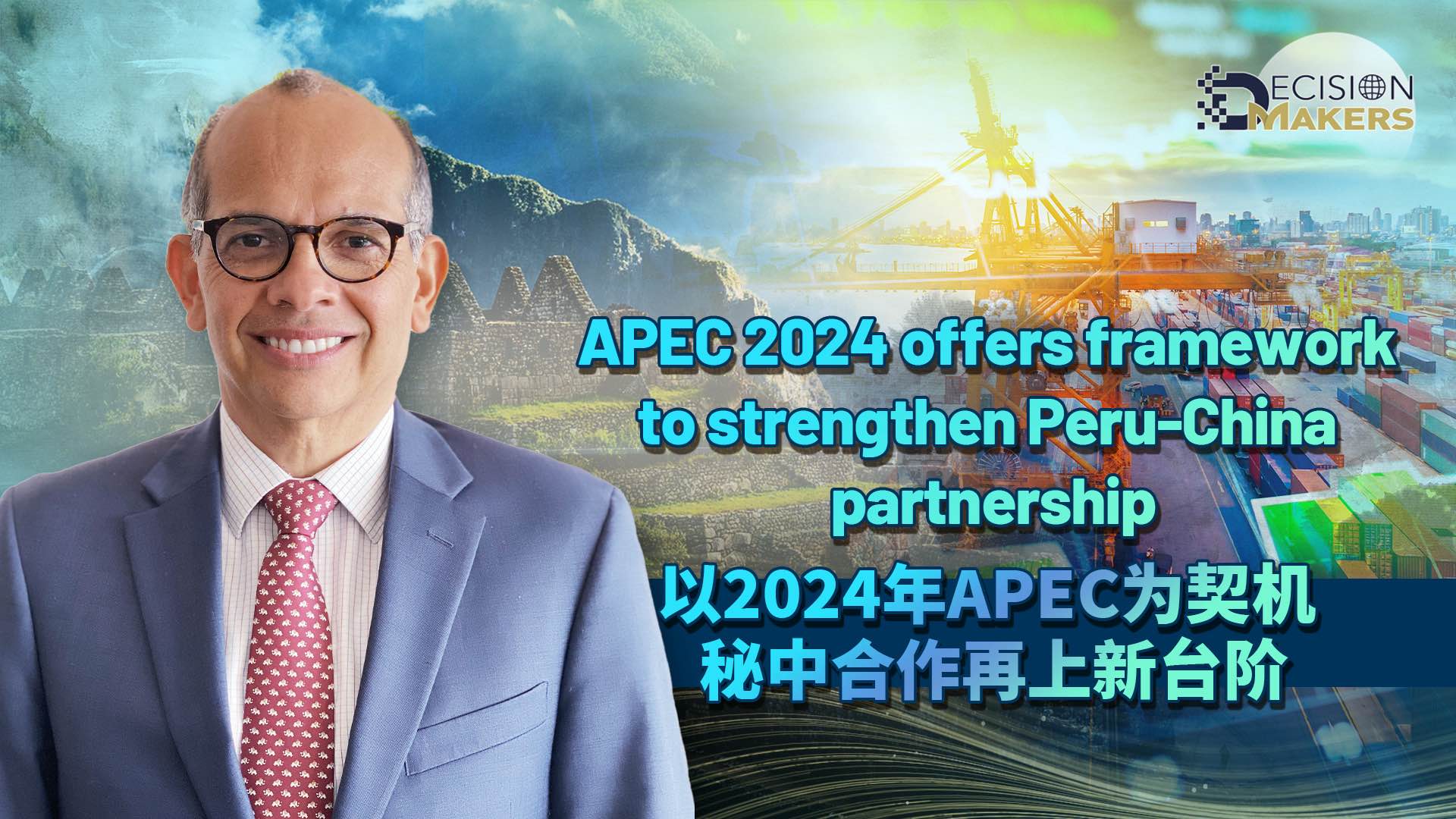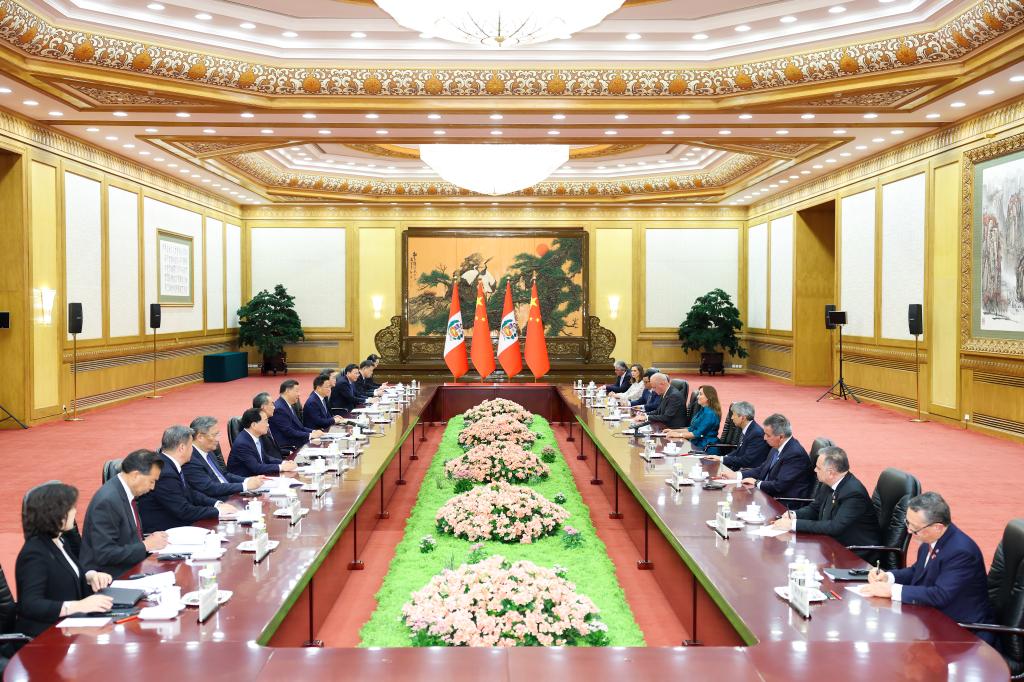
Editor's note: Decision Makers is a global platform for decision makers to share their insights on events shaping today's world.
By Luis Miguel Castilla
The Asia-Pacific Economic Cooperation (APEC) provides a unique platform for its 21 member economies to drive inclusive and sustainable growth through trade and cooperation. As a member of APEC since 1998, Peru has consistently leveraged its role within the organization to advance its own economic priorities, while also contributing to the bloc's goals of free trade and economic integration. The forum represents an excellent example of effective public private partnerships (PPP) to boost growth and generate opportunities.
Peru has a strategic chance to address important issues at this year's APEC Economic Leaders' Meeting in Lima, including accelerating digitalization and strengthening bilateral connections within the world's fastest-growing area. During its pro-tempore presidency, Peru has prioritized an agenda to "empower, include and grow" by laying out a set of policies for enhanced Asia-Pacific basin cooperation.
Peru's position within APEC: A gateway to the Asia-Pacific
Peru joined APEC recognizing the organization as a strategic vehicle for integrating into the global economy and is hosting the forum for the third time. With two-thirds of Peru's trade in goods being with APEC economies, APEC membership has been instrumental in expanding trade and investment. Member economies, such as China, Japan, and the United States, are among Peru's largest trading partners, collectively accounting for over $30 billion in trade.
Moreover, Peru has used APEC as a platform to pursue free trade agreements (FTAs) with other economies. The Peruvian government expects to sign new bilateral agreements with Indonesia and China's Hong Kong Special Administrative Region during the upcoming meeting. These agreements have significantly enhanced market access for Peruvian goods, especially from its agricultural, mining, and fishery sectors, aligning with the country's priorities for economic diversification and export growth. In fact, Peru's exports have grown tenfold since it joined APEC 26 years ago.
Peru-China cooperation within APEC
China, as Peru's top trading partner and one of the largest foreign investors, plays a central role in Peru's APEC strategy. Peruvian exports to China amounted to $23.2 billion in 2023 (accounting for 36 percent of total exports), with Chinese investments focused primarily on mining, infrastructure, and energy. Peru, as the second top copper producer after Chile, is expected to play a critical role as supplier of critical metals to cater to global demand as energy transition policies are pursued towards reducing carbon imprint.
As Peru strengthens its environmental policies, China has become an important partner in supporting green initiatives, such as clean energy investments and sustainable mining practices. Through APEC, Peru seeks to further engage China on green financing and technology sharing to achieve mutual environmental goals.
In this regard, Peru's relationship with China is crucial for its growth prospects, and APEC offers a framework to strengthen this partnership. During President Xi Jinping's visit to Lima, an enhanced FTA between both countries is expected to be signed (building upon the existing 2010 agreement). Peru aims to explore new areas of cooperation with China, particularly in improving supply chain resilience. Moreover, technological cooperation between the two economies can support Peru's digital transformation goals. China's advances in digital payments, e-commerce, and artificial intelligence can serve as valuable models for Peru, which is working to modernize its own digital infrastructure.

Chinese President Xi Jinping holds talks with Peruvian President Dina Ercilia Boluarte Zegarra, who is on a state visit to China, at the Great Hall of the People in Beijing, capital of China, June 28, 2024. [Photo/Xinhua]
Key economic priorities: Trade, digital transformation and sustainability
Peru's economic strategy has increasingly focused on diversifying exports beyond traditional mining products to include non-traditional exports, such as agriculture, textiles, and manufacturing. Agricultural exports alone, including products like grapes, avocados, and blueberries, reached $10.5 billion in 2023, increasing its value by more than 10 times since 2000. Peru is pursing agreements to keep tariffs and non-tariff barriers low and pushing for policies that simplify market access for its non-traditional goods.
Trade facilitation through APEC has been key to reducing transaction costs, simplifying customs procedures, and promoting regulatory coherence. Between 2004 and 2022, APEC-wide trade facilitation reforms resulted in an average cost reduction of 5 percent per trade transaction, directly benefiting Peru's export-driven sectors. Moreover, Peru supports policies that address post-pandemic supply chain disruptions, which continue to impact trade.
Recognizing the importance of the digital economy in driving competitiveness, Peru is promoting initiatives within APEC that encourage digital innovation, support small- and medium-sized enterprises (SMEs), and enhance e-commerce. This is particularly relevant given that 99 percent of Peruvian firms are SMEs, and APEC's digital inclusion policies provide these businesses with tools to compete more effectively on a global scale. This remains a major challenge in view of the informal nature of these firms: Around 85 percent of the SMEs are informal in Peru and constrain productivity growth.During Peru's APEC presidency, it promoted discussions among the membership to achieve higher economic formality and drafted a blueprint based on successful country experiences to attain higher formalization and productivity.
APEC member economies included in the first edition of the World Bank's Business-Ready set higher non-wage labor costs, to be borne by employers, in contrast to high-income economies. APEC membership agreed that reforming these regulations is indispensable to improving labor market competitiveness.
Sustainable development remains a core pillar of APEC's agenda. Given that 22 percent of its GDP is accounted by extractive industries, Peru recognizes the need to balance economic growth with environmental protection. Through APEC, it aims to advance policies that address climate change, promote sustainable fishing practices, and support renewable energy. Peru is expected to advocate for APEC-wide commitments to lower emissions and increase investments in green technology, aligning with its pledge to reduce greenhouse gas emissions by 30 percent by 2030.
In conclusion, APEC 2024 represents an excellent opportunity for Peru as it seeks to become a bridge between Latin America and Asia. Its pragmatic agenda underscores the importance of promoting trade liberalization, enhancing digital capabilities, and pursuing sustainable growth. These goals, combined with a robust focus on multilateralism and collaboration with key partners like China, position Peru as an advocate for shared prosperity in the Asia-Pacific region. Peru rejects protectionist policies as it fully embraces stronger ties with its partners as vehicles to achieve shared prosperity for its citizens.
Luis Miguel Castilla,former economy and finance minister of Peru and former ambassador of Peru to the United States, currently serves as executive director of Videnza Instituto, a public policy think tank in Lima, Peru.

 中文
中文



